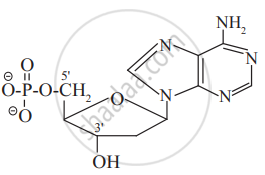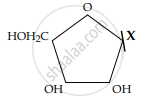Advertisements
Advertisements
Question
Draw a neat diagram for the following:
dAMP
Solution

APPEARS IN
RELATED QUESTIONS
Give scientific reasons:
On complete hydrolysis DNA gives equimolar quantities of adenine and thymine.
The following statement applies to DNA only, some to RNA only, and some to both. Label them accordingly.
The polynucleotide is double stranded. (_______)
Write the sequence of the complementary strand for the following segment of a DNA molecule.
5' - CGTTTAAG - 3'
Write the sequence of the complementary strand for the following segment of a DNA molecule.
5' - CCGGTTAATACGGC - 3'
Draw a neat diagram for the following:
One purine base from nucleic acid
Sugar present in DNA is ___________
Draw structure of following.
Cytosine
An example of feedback inhibition is ______.
Given below is the diagrammatic representation of one of the categories of small molecular weight organic compounds in the living tissues. Identify the category shown & one blank component “ X” in it.

Distinguish between Nitrogen base and a base found in inorganic chemistry.
Write the characteristic feature of DNA.
Explain the structure and function of different types of RNA.
______ is a single ring compound.
Pentose sugar present in RNA is ______
Identify the monomer of nucleic acid.
In 1924, Feulgen showed that ______ contain DNA.
Which pair of bases is present both in DNA and RNA?
DNA differs from RNA in ______.
Identify the CORRECT statement.
Which of the following is not present in DNA?
Nucleotides are linked together through ____________.
The correct statement regarding RNA and DNA respectively is ____________.
What are different types of RNA which are found in cells?
Write a note on the formation of α-helix.
Building block of nucleic acid is ______.
What type of sugar molecule is present is DNA?
Watson and Crick (1953) proposed DNA double helix model and won the Nobel Prize; their model of DNA was based on:
- X-ray diffraction studies of DNA were done by Wilkins and Franklin.
- Chargaff’s base equivalence rule
- Griffith's transformation experiment
- Meselson and Stahl's experiment
